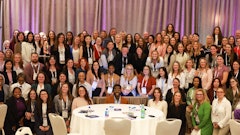
The manufacturing industry has found itself at a turning point. Despite having more than 500,000 job openings, the sector faces an uphill battle in attracting and retaining talent. If nothing changes, as many as 2.1 million jobs could go unfilled by the year 2030. The shortage stems from multiple factors, including an aging workforce, limited interest from younger generations and evolving skill requirements as technology advances.
In addition, supply chain demand fluctuations, inflation, rising costs and many other factors have contributed to this challenge. To thrive, the industry must find ways to attract new talent, retain experienced workers and embrace a more sustainable workforce strategy.
Understanding the labor gap
Several key sectors are grappling with labor shortages due to a high percentage of retiring workers. For example, utilities are anticipating a retirement rate of 16.7%, while manufacturing is close behind at 11.8%. Almost a quarter of the current manufacturing workforce is 55 or older, and as these seasoned professionals retire, they take their valuable experience and skills with them.
While manufacturers are turning to automation to alleviate some of these challenges, there is still a need for skilled workers to operate and maintain these advanced systems and processes. Many traditional manufacturing roles are evolving, demanding workers who can adapt to tech-driven environments. To address this, upskilling and reskilling programs have become imperative for the industry’s long-term sustainability. By offering training in areas such as data analysis, robotics and programming, companies can bridge the skills gap and provide existing employees with valuable new capabilities.
Automation is a key component, but not the whole solution
Automation offers manufacturers a significant return on investment, enabling them to streamline processes, enhance efficiency and reduce the pressure as well as physical risks related to human labor for repetitive or physically demanding tasks. While automation offers a path forward to help mitigate the shortage, it will not and cannot replace all human workers. For example, packing and palletizing operations, which often face high turnover, can be automated to reduce strain on the workforce.
Human-centric roles are emerging alongside automation, where employees focus on managing, programming and maintaining these technologies. A shift toward automation also frees up workers to engage in more strategic and fulfilling work, creating an environment that can appeal to younger talent.
This shift would allow for more strategic roles that would support broader initiatives. For example, a recent project, which included expanding a facility by 245,000 square feet, created 225 jobs and included state-of-the-art production lines that leverage the latest technologies to make the created jobs more attractive to the newer workforce. This allowed the company to produce more than 100 million products annually and reduce its wastewater output by 10,000 gallons a day. The investment in advanced technology and sustainable practices positions companies as forward-thinking employers, attracting more younger talent.
Revamping recruitment and retention strategies
In today’s competitive labor market, traditional recruitment tactics are no longer enough. Manufacturers that succeed in filling open positions often focus on competitive pay, improved working conditions and flexible schedules. Some companies are even redesigning their facilities to create more appealing work environments with better lighting, workspaces and additional amenities like walking trails and a cafeteria with plenty of lounge areas.
Employees want to feel valued and supported in their work environment, they want to work for companies that withhold their corporate responsibility commitments. Even small gestures like transportation assistance and improving or adding on-site amenities can lead to a more engaged workforce, ultimately reducing turnover rates and attracting a broader talent pool.
While the labor shortages and supply chain disruptions pose significant challenges, they also present an opportunity for meaningful transformation. By prioritizing automation and workforce development, manufacturers can build advanced facilities that are better equipped to handle market shifts and global competition.
By investing in technology and workforce development, the manufacturing industry can better navigate the unpredictable labor market and supply chain with confidence and resiliency.


















